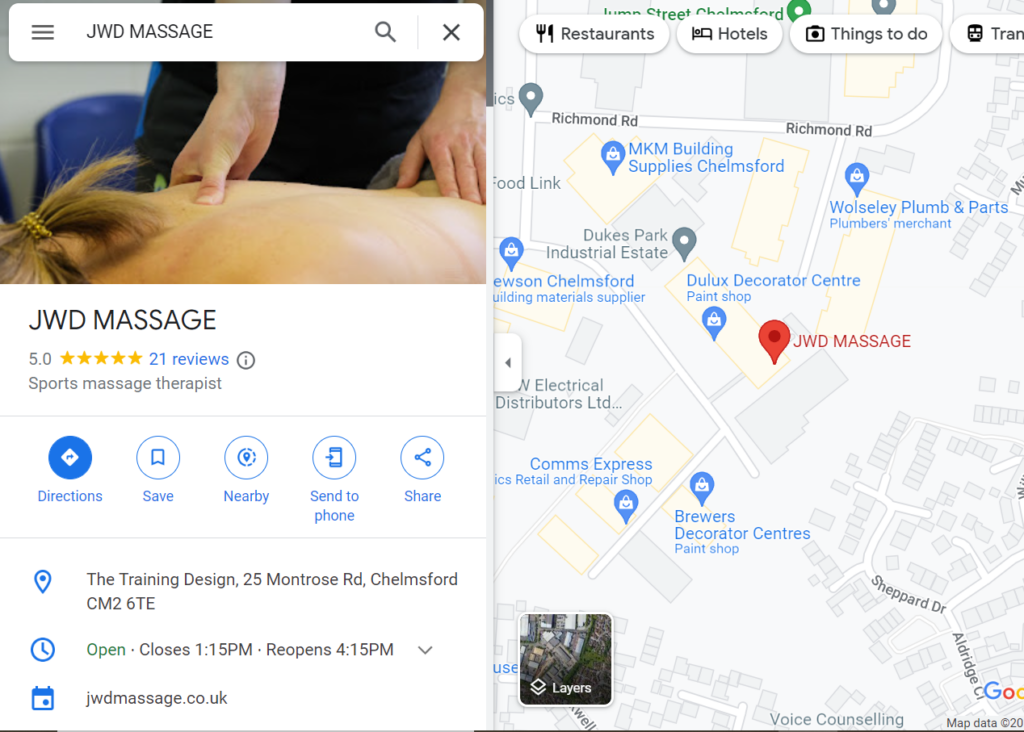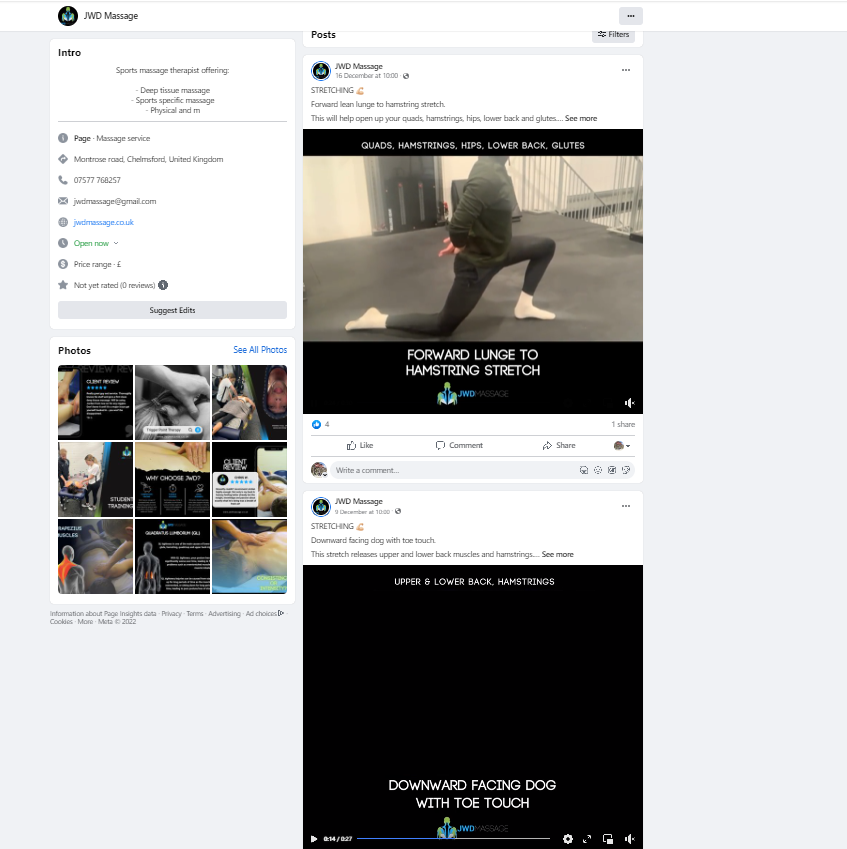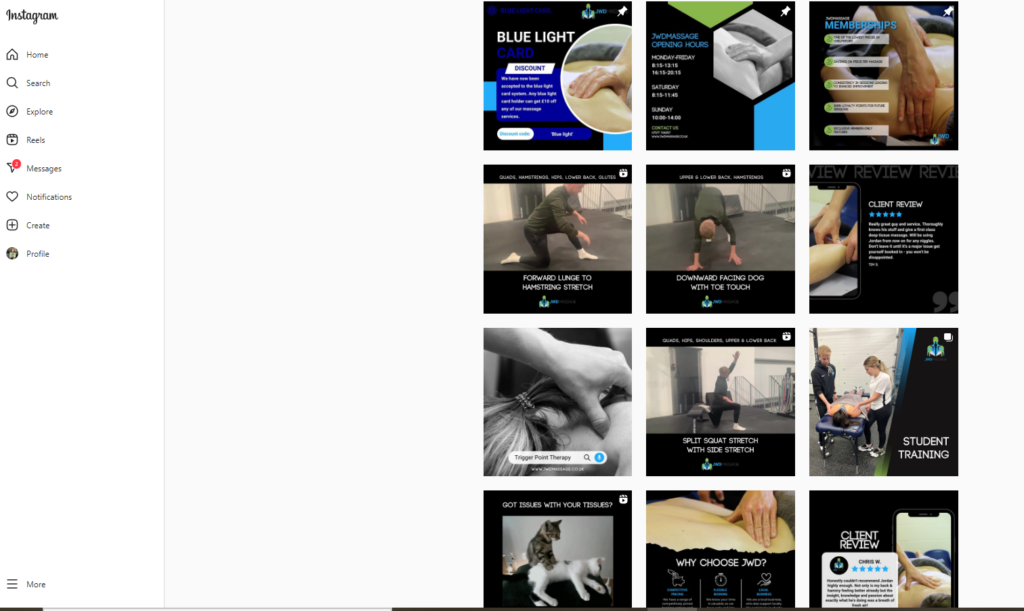Starting up your physical therapy practice is challenging, but marketing it is another matter.
We delve into the ways that you can make your physical marketing strategy a success, with the help of sports massage therapist, Jordan Denyer, founder of JWD Massage.
Nail your marketing plan
The very first step in marketing your physical therapy practice is being clear on what you’re offering. Establish who your target client is and exactly what it is you do. Even having an example of your target customer (think age, sex, employment status, hobbies and interests), will focus your strategy.
If you’re just starting out, look at your local competitors to establish your unique selling point (USP). There could be unfulfilled needs in your area. For instance, competitors might not focus on a specific sporting injury or offer Pilates classes.
“Try and be specific about what service you offer. It makes your marketing a lot easier,” said Denyer. “Do you offer advanced services such as dry needling or shockwave or spinal manipulation? That will identify what clients are going to pay for as well.”
>See also: Three tests to measure the strength of your USP
The numbers are all-important, as Denyer explains. “For the marketing plan, I try and put in the numbers that I might be getting across all my socials. So I might say, ‘I got 100 views this month, across all my platforms, can I put out more content – or better content – to then get me 200 views the next month?’ I’d set yourself up milestones or targets, I might have a one month plan and say, ‘From 100 [views per month] and then in six months’ time, I want to have 600 views per month.’ That might be the case of having better quality videos with better titles and thumbnails.”
Next, create your branding. What emotions you want to convey, what colours and tone of voice will help you to get that across. A clean design works well in a healthcare setting because it’s calming and professional. Denyer’s branding name is blue, light blue, light grey and black. “You can go through all the colour palettes to see what your company is going to be like before clients click onto the page. It’s got the colours of the blue and the green for health and wellbeing that people want to see coming off your brand as well. Just make sure that your colours flow together.” Go for a tone of voice that is authoritative but sympathetic. You want to be seen to know what you’re talking about while understanding the patient’s individual needs.
Make sure your branding is consistent across all of your physical and digital materials to reinforce your messaging.
Figure out how to deliver your marketing plan: what time span it’s going to cover and whether you need extra support. There’s no exact science here, just do whatever feels right for where your business is at.
Focus on your digital advertising
Of course, your digital presence will make up a huge part of your marketing strategy.
Google My Business is a great place to start. “Be on Google and have it set up properly so that people can find you. People in the local area might have gone to Google and searched for physios in whatever area they’re in. You want to be the first one that comes up on their list, because that’s where you get most of your customers from, if it’s not word of mouth,” said Denyer.
It’s also vital to keep the information updated, especially with the holidays coming up. Display your opening hours on there so that clients know when they can book.

>See also: 5 Google tools to help you grow your small business
One feature on your Google business widget, as you’ll have probably already seen, is reviews. “Having reviews is really important for you to get higher up the list so people will find you quicker,” said Denyer. “It’s just a way of Google making sure that the businesses that are at the top are well-known and established.”
Ask your existing clients for these reviews. Denyer uses a follow-up email with exercises tailored to the client and a quick link to leave a rating and a review on Google.
Referral schemes
With existing clients in mind, let’s talk about referral schemes. This is an organic way of marketing which involves recommending your business within the networks of said existing clients. A referral is a warm introduction of sorts, building more trust in your business. “I offer really big discounts if someone then referred someone else,” said Denyer. “I do up to 75 per cent for the next person that does come in. That’s just the way of getting them through the door.”
Paid advertising
Paid ads are easy, quick and measurable. They can target where your audience is and keep you visible. Your ad will also have enough data attached to it so that you can easily analyse the results and tweak your strategy based on what your discover. For example, it may become clear that your ad would perform better if one of the target demographics was amended slightly.
Email marketing
Email marketing can build a loyal database, with personalised content going straight to your customers’ inboxes. When you use an email distribution platform, it’s easily measurable, so you can see what is performing well and how your email open rates compare to the link click-through rates. If you’re using basic email it’s more cost-effective than other forms of marketing, especially if you’re starting out. It’s an easy way of linking to and from your social media to make an all-round cohesive brand.
>See also: Why email marketing is still crucial
Plan your social media carefully
It goes without saying that social media is going to boost your marketing strategy, particularly the more visual ones such as Instagram and TikTok.
Lean towards video content
“Posting on Instagram or Facebook has been the best for me,” said Denyer. “I’ve tried to use things such as YouTube and TikTok which are more video-based. I like to do as many videos as possible.” He finds that videos are better for the algorithm, especially those done in portrait mode on a phone rather than landscape. He reckons it has something to do with the screen resolution and the screen size it takes up on mobile. “People are more attracted with the videos. Doing real-time videos on Instagram or making short snappy short videos on Facebook do pretty well as well,” he said.
But what kind of content works for physical therapists? “I’d say demonstrating a certain area. So, if they’ve got shoulder pain, we’ll give them three exercises to do,” said Denyer.
Here’s an example of JWD Massage’s Facebook page.

How often should I post on social?
“With socials, I try and post once a day. Your followers see you actively posting and that you’re posting good content,” said Denyer.
He generally goes by a rota:
- Day one – video
- Day two – text, which might be an explanation or an exercise
- Day three – a picture, which might be someone who’s getting in a sports massage
- Day four – a Google review from the website’s Google reviews page put on to Instagram, for example

“I always say that you should be transparent in posts,” said Denyer. “If you’re hiding information, clients might think, ‘Oh, you don’t know what you’re talking about, or you missed this.’ So just be really transparent with what you’re doing, why you’re doing it and the benefits of having a treatment.” Transparency also includes being honest about the things you don’t treat.
Get out and collaborate
As physical therapy is so community-based, it’s wise to get out and about to local events and to collaborate with local charities and businesses.
“The number one is collaborations with local sports clubs – maybe go to a charity day,” said Denyer. “I recently did a collaboration with the Chester Marathon with another video company. We came together to offer massages at the end of the marathon for people to use for free. That’s free promotion – we can get business cards and banners and that sort of thing.”
Budget – for money and time
Your budget will vary depending on what stage your business is at. A start-up will be spending more on getting their business up and running, for example. “If you’re just starting out, and just trying to establish yourself, social media is definitely is a good way of free marketing,” said Denyer.
But if you’re a bit further along, weigh up how much you can spend on your marketing vs other parts of your business. “I’ll try and set out a potential profit based on what I made the month before. I might say 10 per cent of what I want to make next month is going to go on to marketing or promotions, or I want to invest in a better camera, or something like that. I would always keep it at the same level. So I’ve set it at 20 per cent. No matter how much money I make next month, how much profit I make, that 20 per cent still going to go back in to where my marketing is going to be. That way, it’s always consistently running.
“If you’re putting marketing into Google Ads or Facebook Ads or something like that, you don’t want a massive spike, and then a huge drop off because you haven’t got any money there. You don’t want to go all-in straight away. You want consistency.”
Your time is also valuable and definitely worth budgeting just as much as your cash flow. “I do one day per week at the moment,” said Denyer. “That might be filming, it might be updating the website. It could be doing a blog, that whole day. Any promotional stuff that I want to have done next week. I’ll figure that out as videos take the longest time. I’ll try and have no appointments, if possible, on Mondays.”
How to shape your physical therapy website
Your website is the core of your physio business where potential customers find out more about you and the services you offer as well as making bookings.
Your booking system
All of JWD Massage’s bookings are done online. “I always make sure that, clearly on the website, each service has got its own section. It might be sports massage for half an hour or sports massage for an hour, making sure the pricing is on there. I find that people will message me just to find out the price if they can’t find it.”
Again, transparency is key here. “I know a lot of videos online, on social media, that they just say ‘book now’ or ‘book today’ and then get put off because they can’t see the price.” Being upfront about the days and the availability that you’ve got also builds trust with customers.
>See also: How to create an online booking system
Regularly review the customer process from an outsider’s perspective so that everyone is covered. “It might be someone, say, one of your work colleagues, someone from outside. They’ll go through the process of trying to book a session or trying to find out more information. Give them a template: ‘Have I got this in the website? Is this information visible to you, you find this easy enough?’ And they can just go through the list and go, ‘Yep, we’ve got all that’. Or you might be missing a section on shockwave therapy that I would actually like to book him for.”
Blog
It wouldn’t be a proper marketing article if we didn’t suggest you having your own website-based blog. These can be regular posts solving common and niche physio issues – optimised for search engines, naturally. Having a blog can serve multiple purposes: generating leads, educating users and establishing yourself as an authority in the industry.
“I found that blogs work really well,” said Demyer. “I do that weekly just to try and keep updated. That’s another thing that will just refresh the page a little bit higher than someone else that hasn’t posted for a couple of months.”
Should I hire a marketing agency?
Hiring an agency is another option if your business is stagnant or you don’t have the time or the inclination to do your marketing yourself. If you need to hire an agency, make sure they understand your needs and your values align.





